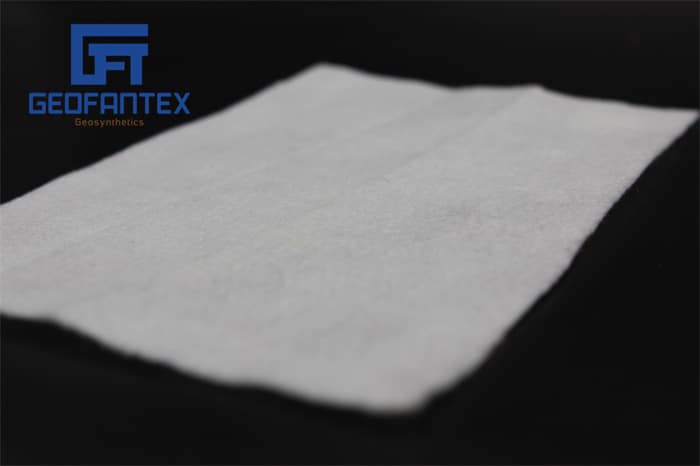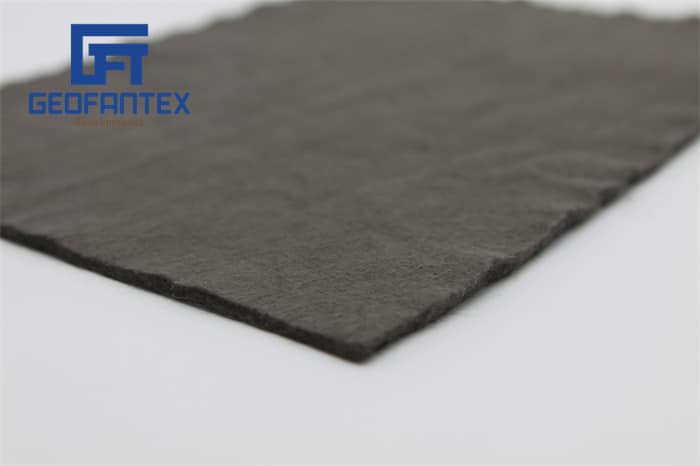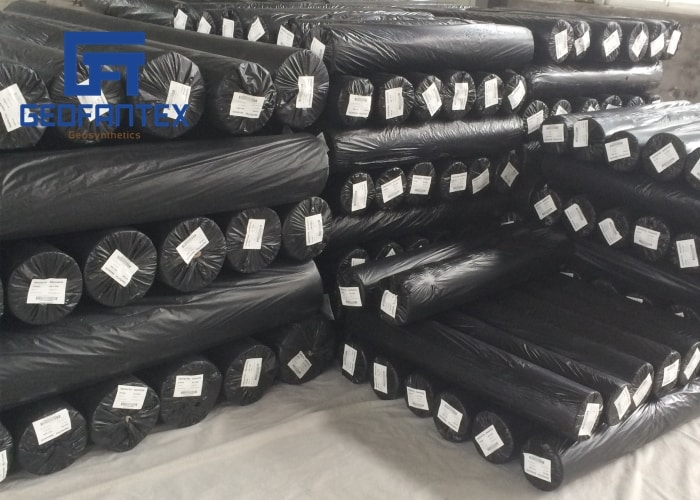Over the years we’ve worked with hundreds if not thousands of home owners and contractors about proper french drain installation and what type of fabric material is best to use. Many of the calls are from frustrated folks needing to replace failed drainage systems. we’ve gathered together a list of the most common French Drain Mistakes, so you can avoid these common pitfalls.
1. Not Calling Before You Dig
By far the biggest mistake made in home trenching/digging projects like drainage is forgetting to call and find out what utilities might be underground. It seems obvious, but its very easy to assume in a back or side yard that you’re fine to dig however, trenching through a power, or gas line can be dangerous and expensive to repair. The best practice before any digging project where you’re not 100% sure that there are no buried utilities is to call 811. This service will enable all the local utilities in your area to come out and physically mark with paint any utilities on or near your property. Additionally there may be other regional restrictions about water runoff or home owner association covenants that may direct where and how you can install drainage on your property.
French Drain Fabric
We offer a large selection of French Drain Fabric in multiple weights and roll sizes.
French Drain Fabric – 4 oz – Various Roll Sizes Available

French Drain Fabric – 6 oz – Various Roll Sizes Available

2. Using the Wrong Type of Drain Rock
Proper drainage rock is crucial for adequate permeability and drainage. Using a clean natural round stone for your drain fill material enables good flow through the aggregate and won’t clog the system. When available a great choice of stone is 1-1/2″ clean round rock.
- Use Natural 1-1/2″ round rock for best drainage. Washed rock is ideal.
- Avoid small pea gravel as the spaces in between stone is smaller minimizing flow rates.
- Avoid Crushed Rock (minus) that compacts and has “fines” that will clog pipe inlets.
PRO TIP:
If round rock stone isn’t available in your area and crushed stone is the only practical option then its recommended to use a sock wrapped drainpipe. The sock material will prevent the fines from the crushed rock from clogging up the inlet holes in your perforated or slotted pipe.
Example of Clean Round Rock vs crushed and gravel
Drainage Fabric missing in French Drain Trench
3. Not Lining the Trench with Drainage Fabric
Another big issue contributing to early French drain failure is not lining the trench with a non-woven geotextile drainage fabric. The drainage fabric acts as a soil separator and prevents dirt and debris from mingling with your rock fill while allowing the water to freely flow. By omitting this drainage fabric there is nothing stopping the subgrade earth from mixing in with your drain rock and this contamination will lead to reduced capacity and ultimately clogging/failure over time. If you want to ensure your system continually performs for decades to come then be sure to line your trench with professional-grade non-woven geotextile drainage fabric using the “Burrito Wrap” install method.
- Industry standard for French drains are 4 to 6 oz non-woven drainage fabric.
- High quality drainage fabric can last for decades without issue
- Avoid using socked wrapped perforated pipe alone without drainage fabric as it will easily clog with dirt/soil.
4. Selecting the Wrong type of Landscape Fabric (use non-woven)
Select the correct type landscape fabric that will properly drain sub-surface water is key to installing a functional and long lasting French Drain. The two primary types of geotextile landscape fabric used are non-woven fabric, a permeable felt like material, and woven fabric. Both fabrics have their advantages depending on the application. For water drainage you will need a something that will let water easily pass through and also keep dirt and debris from entering in. Non-woven drainage fabric is specifically engineered for this purpose. Nonwoven Drainage Fabric is designed to allow water to pass through while filtering dirt and debris from entering into your system and clogging up drain lines. This type of fabric is also sometimes called landscape drainage or filter fabric for this reason.
Woven landscape fabrics typically have a greater pull strength, but in general do not provide a high flow rate, making for poor drainage. Woven fabrics are commonly found as ground cover for weeds, and also under gravel driveway and paved road construction where strength is needed.

PRO TIP:
Use 4 to 6 ounce weight non-woven Drainage Fabric. These are the most commonly used weighted fabrics to line a french drain. It provides great flow through rates and is strong enough to last the life of the drain.
Nonwoven drainage fabric vs. Woven Geotextile
Excavating a French Drain
5. Placing Excavated Soil Back into the Trench
Trenching can be a chore and sometimes contractors and home owners find it easier to put the left over excavated soil/clay on top of the newly created drain system. Adding soil back into the trench should be avoided. Excavating the trench and installing a drain system is normally done because because the soil didn’t properly drain. Ideal drain fields are porous, allowing water to flow to its desired destination without impediment. By adding soil/clay back into the drain system will clog and reduce the capacity of your French drain over time. BOTTOM LINE: Once the soil is removed don’t put it back in!
6. Lack of Positive Slope for the Drain
The pooling of water in a drain pipe can lead to some major issues and create problems for your drainage system. It’s important that you take the time to ensure the pipe is at an angle that will allow the water to drain.
Slope Scenarios:
No Slope: When the pipe is completely flat, water requires more energy to move through the drain. Zero slope systems will not allow sub-surface water to drain properly. Low Spots: Be mindful to avoid low spots or dips in your trench. Pooling can occur, increasing the retained water within the drainage line. This kind of pooling can be extremely problematic as it attracts one of the most detrimental things to drains… tree roots. Tree roots naturally seek out moisture in order to promote growth and are attracted to the standing water in your drain. Once roots enter the system they will block flow and reduce effectiveness. A properly built French drain that has low spots and retains water will NOT stop tree roots. These roots can and will gradually grow through the fabric destroying the integrity of your system as they seek moisture. Its important that all of the water is able to dissipate, avoiding the invasion of roots, vermin, and bugs. Negative Slope: A less common but still undesirable pipe position is when the trench and/or pipe has a negative grade. This condition makes it impossible for water to flow through the pipe. The water table in the ground has to rise to a high enough level of saturation in order for it to flow through the system. Negative slope in your drainage pipe is bad if the goal is to drain away from a building as the negative slope can draw water back towards a structure or foundation, making things worse. Good Slope: Greater than 1% grade slope is ideal for your trench. This will allow water to drain away from the inlet and ensure gravity does all the work to distribute it along your drain lines.
Various slope conditions of a drain-pipe
7. Gravel Only drain without a Drain-pipe
French Drain without drain pipe
A common mistake made by homeowners intending on installing drainage is leaving out the drain pipe. By missing this important step the drain cannot handle heavy water flow, which reduces its effectiveness at mitigating idle water. The purpose of a drain is to direct pooling surface and subsurface water where you need it to go. Having a drain pipe, most commonly a 4″ or 6″ perforated pipe surrounded by round drain rock provides the capacity to move this water away from structures and prevent pooling. BOTTOM LINE: Skipping out on drainage fabric and pipe will inevitably cost you more when you need to replace the system in the near future.
8. Tying a downspout directly into the French drain
It is not uncommon to have gutter downspouts drain directly into an in-ground drainage field. A drain system can be overwhelmed with incoming water during heavy rain, or sheet rain, causing a flood of water to enter the drainage system. If this is the system you are working with you can prevent flooding of your drain system by installing a catch basin before before the drain field and tie the French drain into the basin. Installing a catch basin also enables a point of access to clean out leaves and debris that enter the basin before they potentially enter and clog your drain line.
Downspout directly leading into French Drain
Include Catch Basin from Downspout before drain
Final Thoughts
By avoiding these common installation pit-falls you can help to ensure a long life of your drain and prevent the need of having to re-install and dig your drain field in a few years. If you have any questions about how to install in your specific area it’s recommended to reach out to a local landscaping or water proofing expert when designing a system to diagnose how your drain system is working, or if it requires more attention. If your drainage project requires non-woven fabric consider our selection of professional-grade nonwoven fabrics below that are perfect for this kind of application. Also feel free to contact us with any drainage fabric questions, or to order by phone. Pro Fabric Supply: (800) 520-7731
